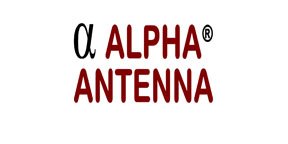Ron Schwartz (K2RAS) presented this material as a demo at our LARC General Meeting in March 2018
SOFTWARE DEFINED (SDR) RADIOS
FlexRadio 6400 100W Transceiver ($1999, $2300 with internal antenna tuner)
Removed broken Link Aug 2020 Jerry N0OUW
Summary Description
The Flex is a world-class software defined radio (SDR) transceiver. Simply put, the radio takes RF signals from the antenna, passes it through a bandpass filter to remove noise from bands you are not listening to, and then directly converts the signals to digital (computer) data. The data is then manipulated only using software in the radio. The Flex is actually more of a computer than a radio in the normal understanding of the words. All the heavy software processing is done in the radio, the connected computer only handles the display(s) and some minimal overhead, so a Flex radio can also be controlled from an iPhone or iPad interface. Flex also sells a handheld front-end to the radio called the Maestro (removing the need for a computer at all).
The radio is acknowledged to have world-class sensitivity. I have found that the next best two features are it’s waterfall display which I believe surpasses anything else in the market (there is more going on under the display than simply the ability to show a large waterfall). Second, The architecture provides for unlimited ‘virtual’ (no cable) serial ports and audio cables, with all data passing through a single ethernet cable. In effect, this allows multiple computers to simultaneously run other digital mode programs over a network (either locally or remotely). Over time a software defined radio can benefit from additional capabilities or performance through software upgrades, unlike a normal radio which is limited to internal radio hardware.
Benefits
Great performance
Excellent user interface
Advanced networking architecture
Multiple software front-ends available
Upgradable through software updates
Disadvantages
Expensive, although arguably more ‘bang for the buck’ than other comparable radios
MAGNETIC LOOP ANTENNAS
Summary Description
Magnetic Loop (ML) antennas are inherently good at removing RF noise, and work as well at 6 feet above ground as at elevated heights. ML antennas have a largely omnidirectional pattern, with sharp nulls. This allows the antenna to receive stations in most directions without rotating the antenna. At the same time an interfering station or noise source can be ‘nulled out’ by simply rotating the antenna.
Magnetic Loop antennas fall into two general groups, receive only amplified loops, and receive/transmit loops. All of the loops are generally around 3’ in diameter. Receive-only loops are NOT resonant and do not require tuning, They have a high-gain amplifier usually at the base of the antenna. Any attempt to transmit on the receive antenna would damage the amplifier (DON’T DO IT!). Most receive only loops on the market perform well from the 160M band to around the 15M band.
Magnetic Loop receive/transmit antennas must be tuned to be resonant on the transmit frequency. The tuning can be ‘finicky’, the antenna must generally be close to the operator since the antenna must be tuned when changing frequency, even within a single band. Magnetic loop antennas (other than extremely expensive ones) are limited to around 20W output, and even at this output significant voltages exist on the antenna (don’t touch them when transmitting). Depending on the manufacturer, transmit loops can cover from 6M to 40M or even 80M bands. It is my experience that transmit magnetic loops have lower receive sensitivity than receive-only amplified loops (discussed below).
On the other hand, transmit loop antennas can be tuned to nearly 1.0 SWR (on their supported frequencies). They also have a natural low take-off angle, so 20W of power can perform as well as 100W on a less than optimal larger antenna.
The combination of a receive-only magnetic loop antenna and a end-fed transmit wire antenna is a great combination for locations with limited space or HOA restrictions. If your location restrictions will not even permit a wire antenna, a portable 6’ high transmit-receive magnetic loop on a tripod is capable of contacting DX stations, even without a permanent antenna.
Alpha Antenna Alpha Transmit/Receive Loop (starting at $200)
Rmoved broken Link Aug 2020 Jerry N0OUW
Summary Description
The Alpha Loop is a receive/transmit 20W magnetic loop (ML) antenna. The Alpha Loop is a good antenna at a good relative price, however multiple competing manufacturers have similar products. I found the tripod supplied with the antenna was not very stable. I replaced the tripod with the Blackmore BJST-60KG DJ Speaker Stand (purchased on Amazon for $37). The antenna is not weatherproof as it comes from the factory, if the antenna will be outside you will need to perform some modifications.
W6LVP Amplified Receive-Only Magnetic Loop Antenna ($345)
https://www.w6lvp.com/product/w6lvp-amplified-receive-only-magnetic-loop-antenna/
Summary Description
The W6VLP is a receive-only magnetic loop antenna. The manufacturer provides excellent support and the antenna is well priced compared to the competition. This antenna was the receive antenna demonstrated at the club meeting. The antenna performs well, the only limitation of the antenna is that it is not weatherproof. If the antenna will be outside you will need to perform some modifications.
DX Engineering RF-PRO-1B® Active Magnetic Loop Antennas ($499)
https://www.dxengineering.com/parts/dxe-rf-pro-1b
Summary Description
The PRO-1B is a receive-only magnetic loop antenna. The antenna has a high-gain amplifier at the bottom of the antenna (DON’T TRANSMIT ON THE ANTENNA). This antenna is weatherproof. The antenna element is comprised of an aluminum tube (compared to coax on the other two antennas). I have nothing bad to say about this antenna, it has performed excellently in my backyard location over the past 4 years. The antenna is expensive, but highly recommended. As mentioned, I use this receive antenna in combination with an end-fed wire antenna for transmitting. In four years I have contacted all 50 states, and over 200 countries.
Building your own Magnetic Loop Antenna Links














 The Custom Facebook Feed plugin
The Custom Facebook Feed plugin